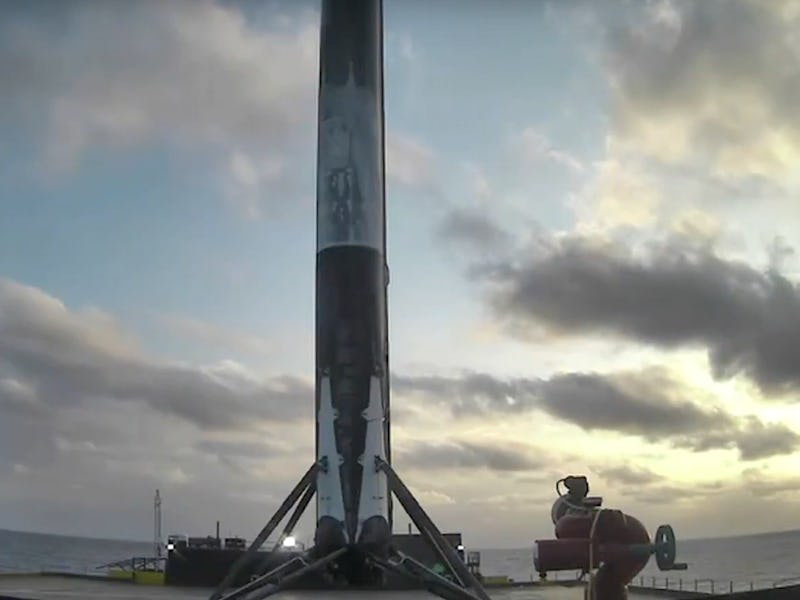
And just like that, the SpaceX Falcon 9 rocket booster appeared safely upright on the deck of a droneship named Of Course I Still Love You. It bobbed peacefully in the Atlantic ocean, floating off the coast of Florida, under a partly cloudy sky.
The SpaceX landing Thursday evening marked the first time in history that a previously used rocket was used to put a satellite into geostationary orbit and then return to Earth. So while the live video feed from the rocket, and feed from the droneship, cut out completely — we typically see the landing later, shot from a drone camera — it eventually returned to show the landed rocket.
The landing was just the secondary objective for the SES-10 mission, which sent up a geostationary communications satellite. Contracted by SES, a Luxembourg-based telecommunications satellite company, it was the third SES satellite — built by Airbus group — that SpaceX has put into orbit. The new satellite, which weighs about 9,479 pounds, will service Central and South American countries.
As you’d guess there’s a major reason to reuse rockets. It’s a dramatically cheaper way to do business. The Falcon 9 costs $62 million, but the fuel only costs $200,000 to 300,000 a mission. The majority of the cost comes from building the rocket, so reusing it makes space business less expensive. To Elon Musk, who founded SpaceX in 2002, it’s the first step to colonizing Mars, in that we will need to make reusable rockets a routine matter. But on Thursday, the forward-looking CEO paused for a rare moment of reflection.
Less than an hour later, though, Musk already set an ambitious follow-up goal for the Falcon 9 project: “Next goal is reflight within 24 hours,” he posted on Twitter.
A sped-up version of the launch of Falcon 9 on the SES-10 mission.
“This mission is the fundamental key demonstration that our technology is capable of re—flight,” said Gwynne Shotwell, SpaceX president, in a statement aired before the launch, who likened reusing rockets to reusing commercial aircraft.
A little more than a year ago, in April 2016, the same first stage of the Falcon 9 first went into space for the CRS-8 mission, which was a cargo resupply trip to the International Space Station. It was also the first-ever time that a Falcon 9 landed on the floating droneship. (It also resulted in an extremely Southern guy memorably narrating the booster’s return.)
Watch the full webcast from Thursday here: